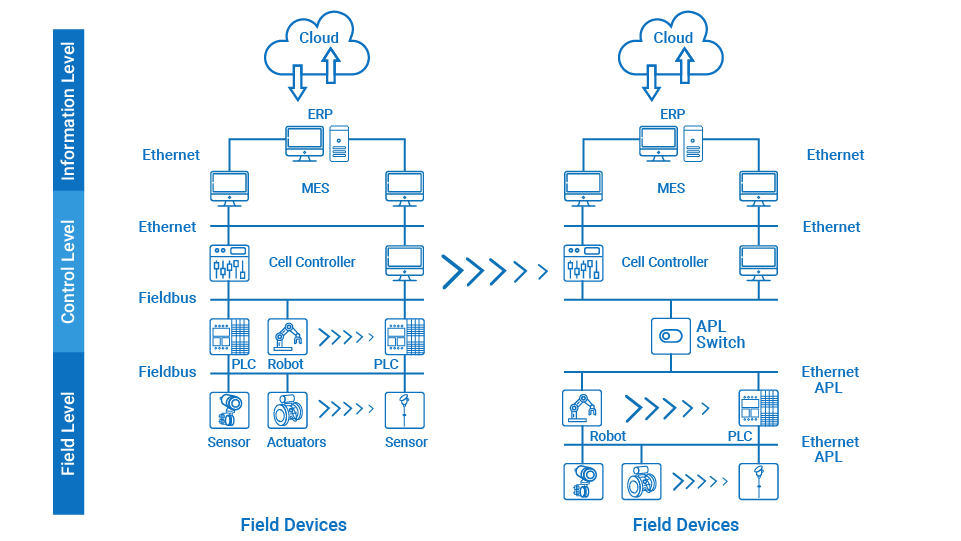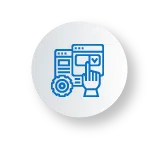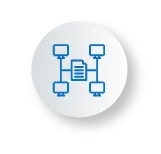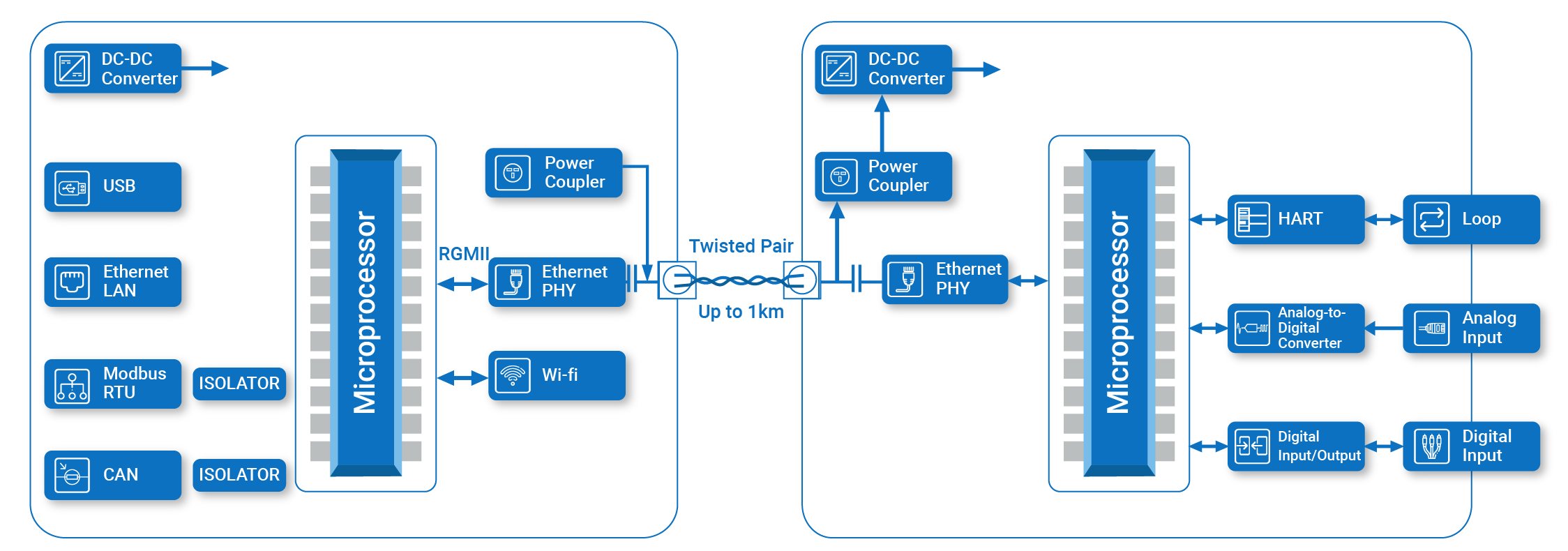Introduction
If we look at process industries, technologies like PROFIBUS PA, Foundation Fieldbus, and HART have been the dominant communication technologies for years now. Given that we are in the midst of massive technological changes in the industrial world, absence of Ethernet in the field layer creates a bump in the road to the seamless integration of OT and IT, an imperative for realizing the true benefits of Industry 4.0.

To reflect on the reasons why Ethernet has not been historically implemented in the field layer, below are a few arguments

Hazardous Area
Process industries typically operate in extreme environments, with hazards and safety risks. As the standard Ethernet physical layer is not suitable for these extremities, the use of Ethernet cabling is not advised in such scenarios.
Limited Cable Lengths
Ethernet cable lengths are limited to 100 meters which does not cover the plant-wide field device installations, making it an unfit and unfeasible networking technology.

Network Constraint
Some of the aspects like topology, 2-wire technology, etc., play a critical role in in process industries’ network architecture, which is not possible with Ethernet-based communication technologies. Standard Ethernet is based on 4-Wire and 8-Wire cables, which does not meet the requirements of process plants.
Why should Industries Deploy Ethernet-APL Services?

Two-Wire Cable
APL combines the benefits of Ethernet with Two-wired installation techniques, which makes it the suitable standard even for hazardous zones like Zone 0/Division 1.

Long Cable Length
APL supports two general types of segments, i.e., trunk and Spur. While Trunk provides high power signals up to 1000 meters, Spur supports low power signals up to 200 meters.

Communication Speed
Communicates at a speed of 10mBit/s, full duplex, which is 300 times faster than the existing alternatives like HART or Fieldbus.

Multiple Power Profiles
Port profiles defined for multiple power levels with/without hazardous area protection. The power level and function indications help improve the interoperability across APL devices and instruments across application areas ranging from engineering and operation to maintenance.

Smart Instrumentation Process
Oftentimes, field devices carry critical instrumentation diagnostic information which if accessed can improve the potential of instrumentation. Ethernet APL provides an optimal method to access this critical information separately making the instrumentation process even smarter.

Seamless Connectivity from Field Devices to Cloud
With fast communication and increased bandwidth, Ethernet APL will enable seamless connectivity from the field devices to the cloud joining OT network with the IT network with the same network standard. This will increase the interoperability among the devices and bring out the possibilities of better data analysis and productivity improvements through improved operational insights.

Intrinsic Safety
Based on 2-WISE (2-Wire Intrinsically Safe Ethernet) specification that defines intrinsic safety protection for all hazardous zones and divisions.
Power Delivery to Field Devices
Ethernet-APL can deliver up to 500 mW in Zone 0 applications, compared to that of approximately 36 mW delivered by 4 mA to 20 mA systems today.
Knowledge/Expertise
While other technologies like HART and Fieldbus require specific expertise and skills, deploying Ethernet APL is relatively easier due to more familiarity with the Ethernet technologies.
Why Utthunga for Ethernet-APL Services?

